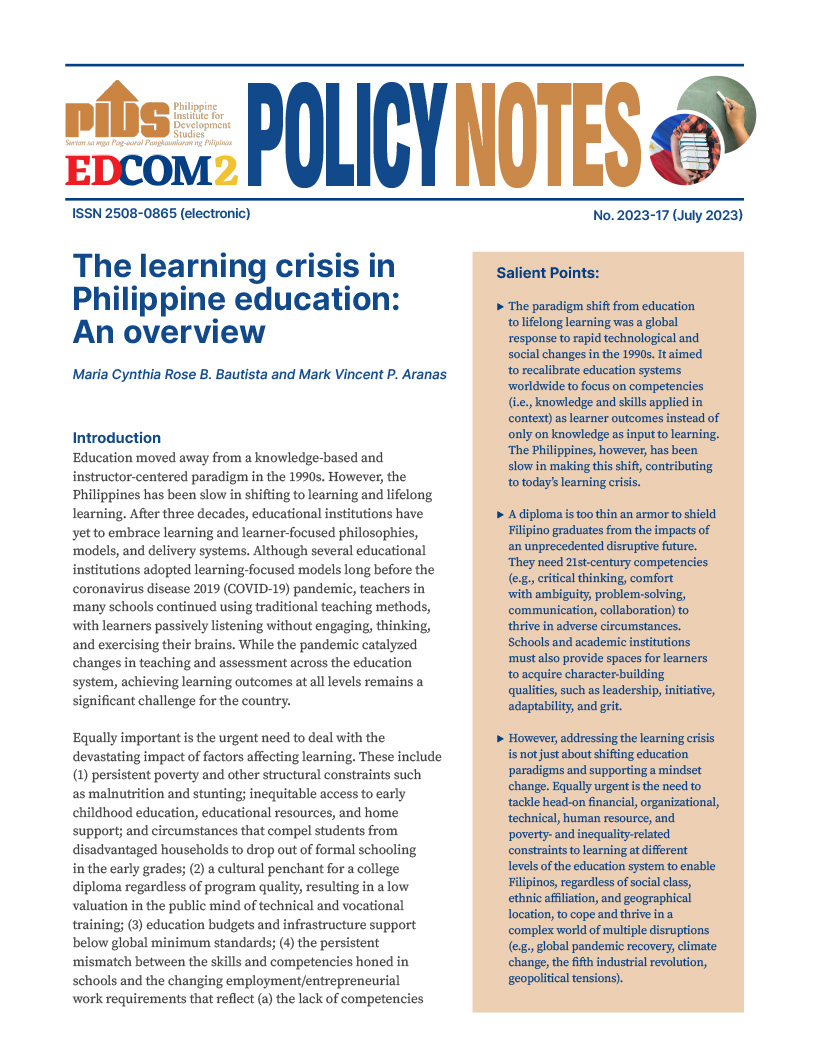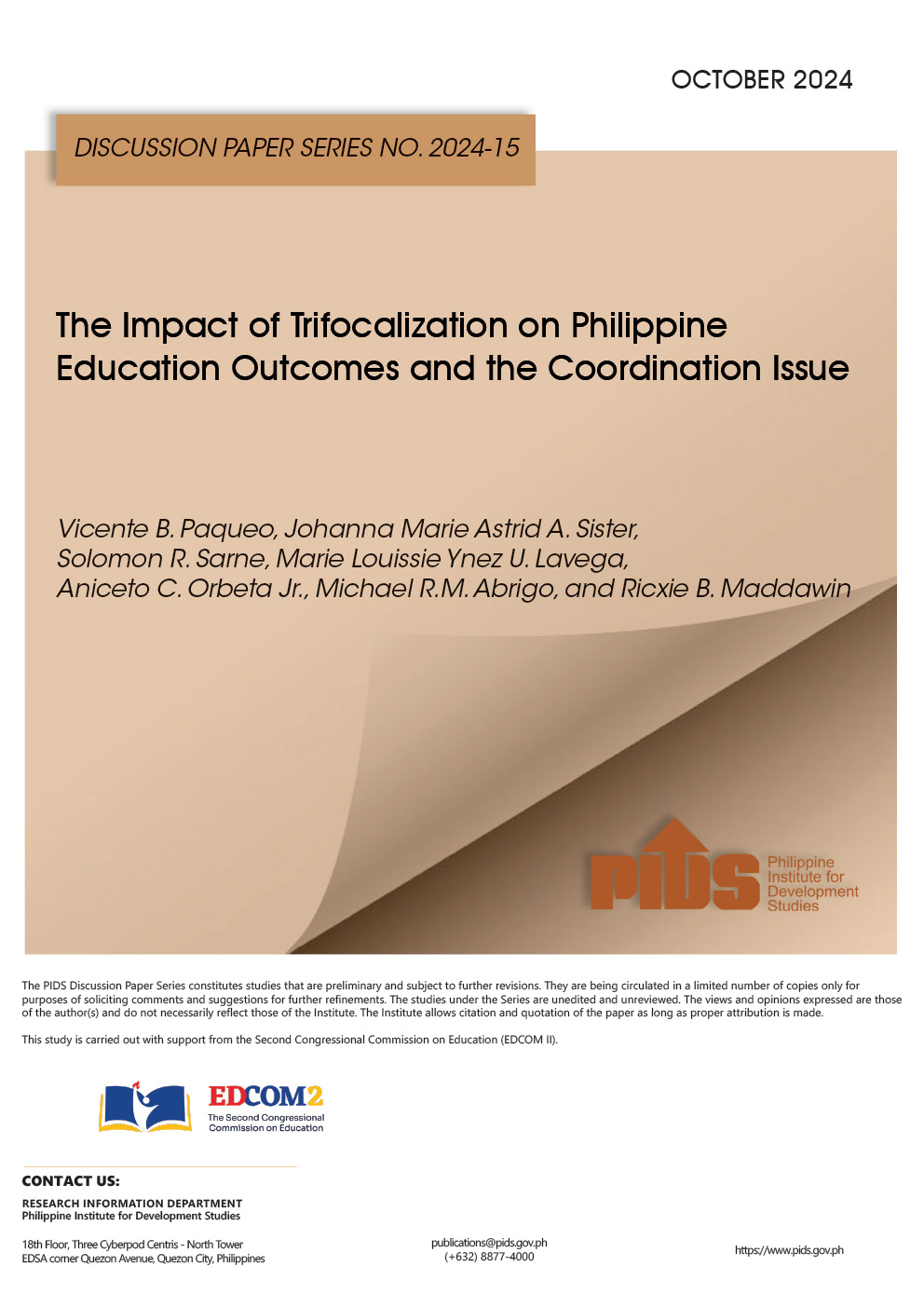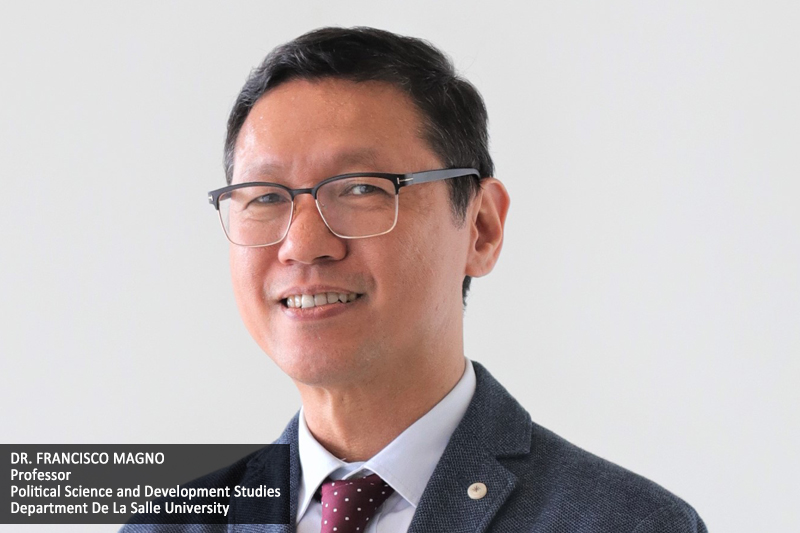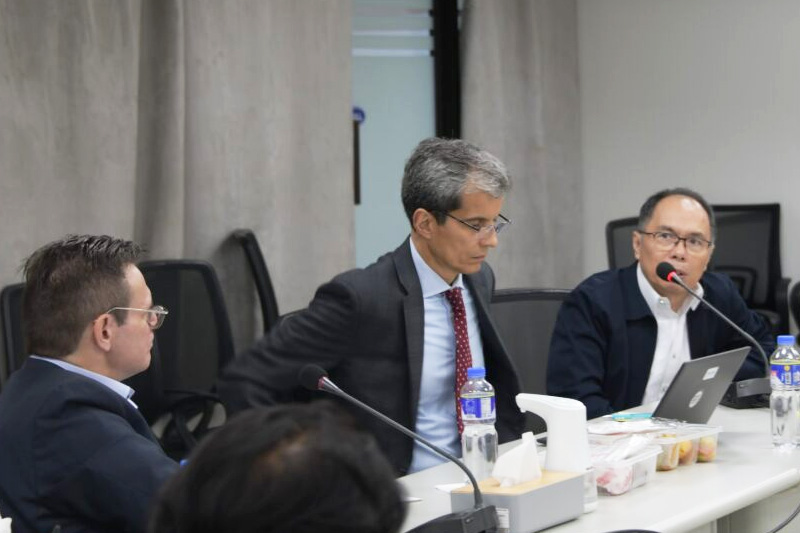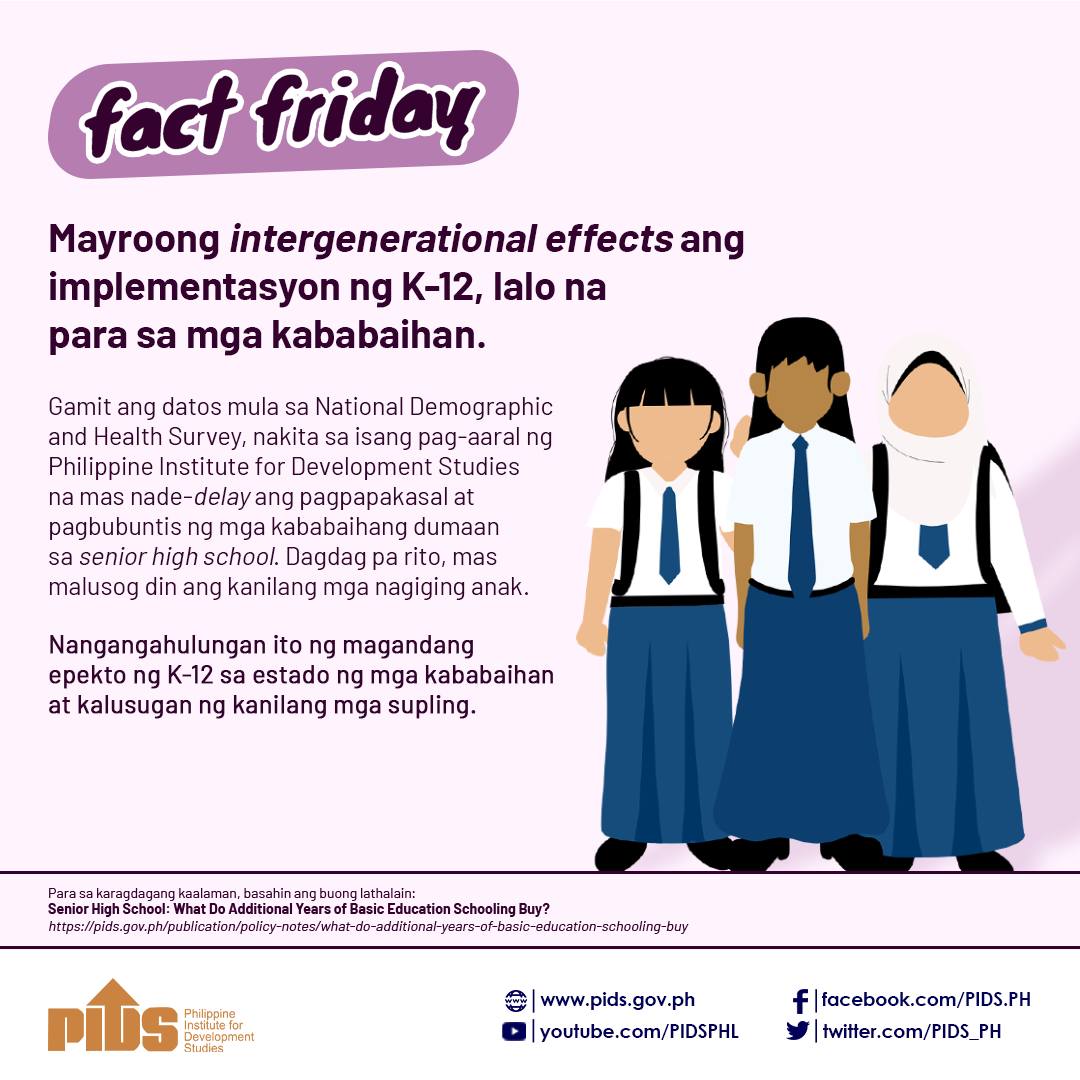Amid the apprehension of some sectors and leaders over the viability of the K to12, state think tank Philippine Institute for Development Studies (PIDS) released a timely policy note offering possible solutions to some of the challenges cited by the reform program's critics.
Dr. Rosario G. Manasan, a PIDS senior research fellow, recommends that higher education institutes (HEI) offer their "excess capacity", referring to the available classrooms and the teachers who will be underutilized when HEIs receive no enrollees in school year (SY) 2016/2017.
Manasan stated this recommendation in her policy note titled "K to 12 reform: Implications of adding Grades 11 and 12 on the higher education subsector", which assesses the effect of the demands of the K to 12 program on the supply capacities of secondary schools and higher education institutes.
The Senior High School Absorptive Capacity Study, conducted by the Asian Development Bank (ADB), found that to accommodate all the students who are expected to enter public senior high school (SHS), the Department of Education (DepEd) must be able to build 27,000 new classrooms by SY 2016/2017, and 23,812 additional classrooms by SY 2017/2018. DepEd would also need to hire more teachers—46,000 by 2016 and 38,700 by the following school year.
These exact demands have caused critics to be wary that the program will only create newer problems, as well as exacerbate the same old and unaddressed issues such as inadequate infrastructure, underpaid teacher salaries, and underfunded school materials.
But the government has remained steadfast that the reform program is long overdue, and that the K to 12 shift is essential to increasing the competitiveness of the Philippine education system.
Manasan's recommendations are an addition to the government's response through the education cluster and coordinating agencies, including the Commission on Higher Education and the Department of Labor and Employment, to explore comprehensive and supplementary action, including schools applying to open secondary high schools.
Though Manasan admits there are logistical concerns, such as uneven geographic distribution of available spaces, she still considers the scenario a "win-win" scenario.
"If all the available places in HEIs arising from the missing cohorts were made available to the SHS program, the total classroom requirement for the SHS program in public schools would drop by 57 percent from 26,955 with pure DepEd provision to 11,572 in SY 2016/2017."
Furthermore, HEIs and the DepEd can use the opportunity to gauge the real demand for SHS facilities and adjust the infrastructure budget, and HEIs will not have to retrench faculty members during the transition period.
To make these possible, the country’s leaders need to create a policy environment that will make it easy for the HEIs to cooperate, and consider mechanisms and programs like education service contracting, concession arrangements, and credit windows for classroom construction.
This press release is based on a policy note "K to 12 reform: Implications of adding Grades 11 and 12 on the higher education subsector". You may download a copy of this publication here: http://dirp4.pids.gov.ph/webportal/CDN/PUBLICATIONS/pidspn1506.pdf.
Dr. Rosario G. Manasan, a PIDS senior research fellow, recommends that higher education institutes (HEI) offer their "excess capacity", referring to the available classrooms and the teachers who will be underutilized when HEIs receive no enrollees in school year (SY) 2016/2017.
Manasan stated this recommendation in her policy note titled "K to 12 reform: Implications of adding Grades 11 and 12 on the higher education subsector", which assesses the effect of the demands of the K to 12 program on the supply capacities of secondary schools and higher education institutes.
The Senior High School Absorptive Capacity Study, conducted by the Asian Development Bank (ADB), found that to accommodate all the students who are expected to enter public senior high school (SHS), the Department of Education (DepEd) must be able to build 27,000 new classrooms by SY 2016/2017, and 23,812 additional classrooms by SY 2017/2018. DepEd would also need to hire more teachers—46,000 by 2016 and 38,700 by the following school year.
These exact demands have caused critics to be wary that the program will only create newer problems, as well as exacerbate the same old and unaddressed issues such as inadequate infrastructure, underpaid teacher salaries, and underfunded school materials.
But the government has remained steadfast that the reform program is long overdue, and that the K to 12 shift is essential to increasing the competitiveness of the Philippine education system.
Manasan's recommendations are an addition to the government's response through the education cluster and coordinating agencies, including the Commission on Higher Education and the Department of Labor and Employment, to explore comprehensive and supplementary action, including schools applying to open secondary high schools.
Though Manasan admits there are logistical concerns, such as uneven geographic distribution of available spaces, she still considers the scenario a "win-win" scenario.
"If all the available places in HEIs arising from the missing cohorts were made available to the SHS program, the total classroom requirement for the SHS program in public schools would drop by 57 percent from 26,955 with pure DepEd provision to 11,572 in SY 2016/2017."
Furthermore, HEIs and the DepEd can use the opportunity to gauge the real demand for SHS facilities and adjust the infrastructure budget, and HEIs will not have to retrench faculty members during the transition period.
To make these possible, the country’s leaders need to create a policy environment that will make it easy for the HEIs to cooperate, and consider mechanisms and programs like education service contracting, concession arrangements, and credit windows for classroom construction.
This press release is based on a policy note "K to 12 reform: Implications of adding Grades 11 and 12 on the higher education subsector". You may download a copy of this publication here: http://dirp4.pids.gov.ph/webportal/CDN/PUBLICATIONS/pidspn1506.pdf.

